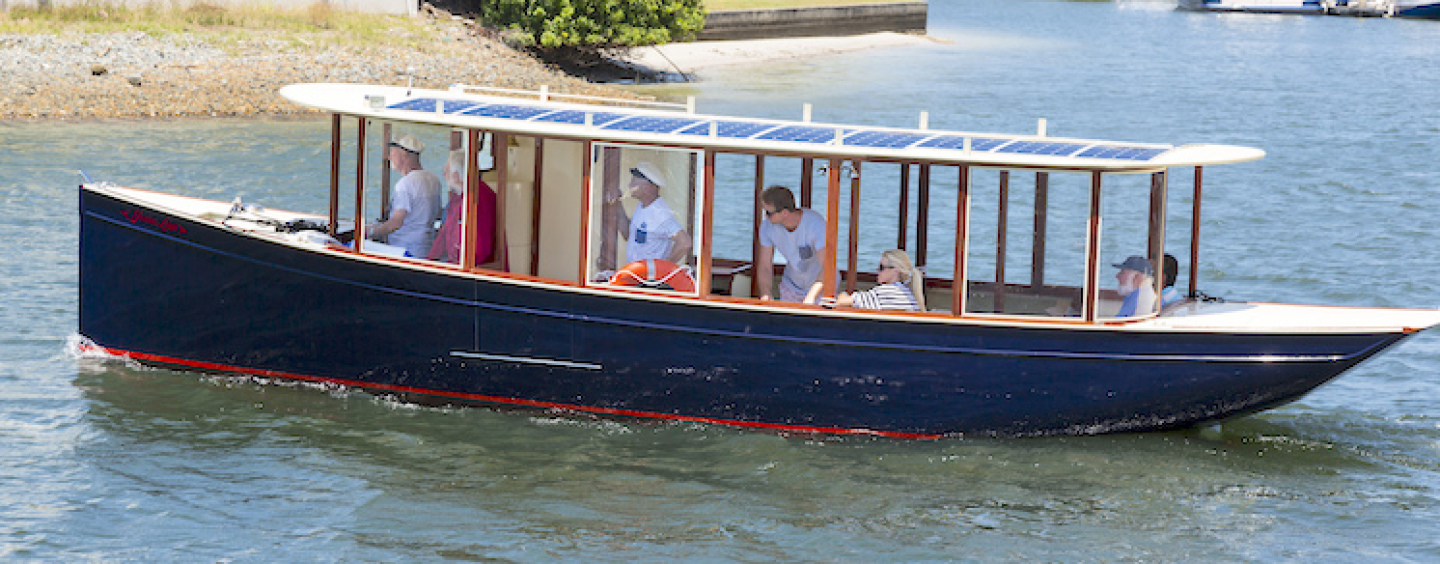The history of electric boats goes back a hundred and fifty years back. By the late 19th century, electric boating was common in many countries. The Thames, for instance, had a network of charging stations—no range anxiety then.
The Secret 33 is very much a modern boat. But the DNA of the early Thames river launches is still very much in evidence. As a designer, I specialise in modern interpretations of boats from the late 19th century and early 20th century, the golden era of yachting. During that period, the internal combustion engine began its long journey to global dominance. But the tide is turning. Electric boats, just like electric cars, are rapidly challenging that fossil-fuelled invincibility.
The key to successful electric boating is in fact a whole bunch of keys. Let us start with the hull. Scruffie boats are designed primarily as sailing yachts. While they look like something from a century ago, their hull forms are anything but. Under the water are some smooth slippery lines from the long fine entry to the wider, flatter stern sections. The maximum beam is aft of amidships, whereas vintage racers or well-honed fishing smacks had their beamier sections much further forward.
The next key is weight. As the great American designer Herreshoff once said, “To go faster, add lightness.” And he did, using all sorts of exotic alloys in the search for lightness and speed. Today, without sacrificing integrity, we have all sorts of weight-reduction materials at our disposal. The Secret 33 uses foam-core fibreglass, extruded plastics, rigid foam-core thermo-formed sheeting, and hollow laminated posts and beams. The whole boat is held together by the boat-builder’s friends—epoxy resin and new miracle adhesives in a tube. So, a fully fitted-out 33, with some big battery banks, water ballast tanks and trimming ballast, weighs in at just over three tonnes. It will not bend, break or rot. So that is less boat in the water and less power needed to push it along.
Technically, the Secret 33 is a semi-displacement hull. With a very modest eight-kilowatt motor, she will crack close to eight knots and cruise all day at six. The boat fully laden will do four knots by solar power alone—that is, to say the power draw is equal to the solar input from the lightweight panels on the roof. But as speed rises, the power draw goes all parabolic on us, so that while that four knots require just over a kilowatt and six knots need three kilowatts, eight knots will draw on every last bit of the eight kilowatts we have available.
Now let us look at another key on the ring: the motor. First up, the motor is tiny—think shoebox. It does not have bushes anymore so it is efficient, reliable, and does not weigh much. The battery bank is the big issue and this key is an important one. Lithium is the buzzword, of course, as it can pack more power with much less weight than lead-acid ones. With lithium, you can utilise pretty much all of the available energy, and fully recharge within an hour. Lithium batteries, however, are still depressingly expensive. The good news is experts have developed a battery with double capacity of the best lithium cells, which may be available commercially in the next 18 months.
The next key is the upper-works, the superstructure that needs to be low and streamlined to reduce windage, yet high and boxy to comfortably accommodate passengers. Clearly, you cannot have both, especially on a ferry. So you try to find a workable compromise. The Secret 33 has very good headroom of two metres and a well-insulated roof. The corners are rounded off with thermo-formed cast acrylic panels, which look cool in a 1920s-way, and reduce wind resistance in a 2016-way. The freeboard needs to be as low as possible without contravening the very sensible regulations regarding passenger safety.
The other little keys on the ring unlock final performance parameters. Rudders, for instance, should never be of the barn-door variety. The leading edge can be rounded, then widening out to a pleasing foil, but the trailing edge is the important one and razor sharp is the goal. Ditto with skeg keels. Antifoul should be racing-type or, better still, copper suspended in epoxy and sanded back for a nice smooth bottom. Any measures to reduce turbulence are worthwhile. In addition, the right propellers are vital for good fuel consumption figures.
There is one aspect of boat design that is perhaps the most important to be considered: ergonomics. There is no point in building a boat that ticks all the boxes, unless it is both easy and safe to operate. These days, “car manufacturers, for instance, spend” up big on ergonomics – it’s the same with boats – we’re all trying to get it right!”. While the first two Secret 33s are passenger ferries, the custom interiors are equally adaptable to private buyers. One observer even noted, “You could live on this.”
In any event, all the keys must work all the time. It only remains for you to unlock the Secret.
By DEREK ELLARD
Interview with Andy Kancachian



























